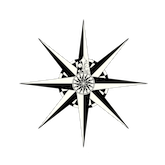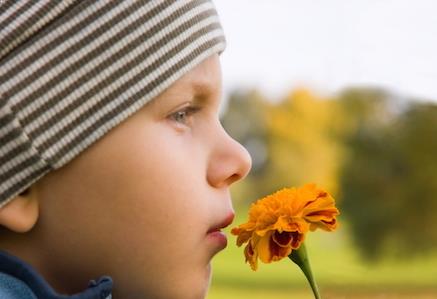Mindfulness Practice
When you look at the child in this picture, notice the 10,000-mile stare. This gaze is called the “10,000-mile stare,” and it happens when someone is totally absorbed in the moment. His eyes are open, but he is completely present with the smell of the flower. That’s mindfulness: absorption in the present moment. No judgment, just presence.
Mindfulness: The Art of Being Present
Mindfulness is simply noticing what is, without judging it or making assumptions as to why it is this way or that. It’s allowing your mind to do what it is designed to do at the most basic level: Notice reality, just as it is. Mindfulness master-teacher John Kabat-Zinn defines mindfulness as “paying attention on purpose, in the present moment, and non-judgmentally, to the unfolding of experience moment to moment.”
Now, it’s worth pointing out that Kabat-Zinn is a highly educated and respected professional with a Ph.D. in molecular biology from MIT.
Mindfulness practice helps everything from stress, anxiety, and depression to motivation, frustration, and insomnia. A mindfulness-based approach gives you the ability to recognize your anxiety triggers and develop an intuitive method to relieve anxiety when it shows up.
Meditation is a powerful way to practice mindfulness because it focuses not on an outcome like “no thoughts, no mind,” but instead on simple awareness of what the mind is doing. This is also called Meta-Cognition, or Meta-Awareness. The idea of attaining “no mind” works well for some, but leaves others bewildered as to why they can’t ‘make’ their mind stop working. To be clear, we don’t say “mindlessness,” instead, we say “mindfulness” because we are increasing our awareness of the mind’s antics for a period so that we get accustomed to it.
Mindfulness Practice: So Simple, It’s Hard
Many people talk about practices like mindfulness and meditation (the two are not unrelated; in my approach, meditation is an exercise in mindfulness) as being quite frustrating in the beginning, like they just can’t get them “right.” This is the stumbling block for most of us. We think that mindfulness means that we are not distracted by anything and that we are 100% in the present, 100% of the time, with zero distractions. But that’s not true. Mindfulness is much easier than that. The practice of mindfulness can seem difficult because we are not used to things being as they are. We add judgment and assumptions — the distractions. However, these distractions can be used as leverage. If we use meditation practice to help us release attachments from being perfect, then we become mindful of what it feels like to be distracted. In other words, as soon as we realize that we are distracted by judgments, assumptions, etc., we simply breathe in and think, “Ah. This is what distraction feels like. Ok.” Then we move on, exhaling, grateful for the realization that there is no reason to judge judgment (but if we do, breathe in and notice what it feels like to judge judgment, then exhale).
Once you have formed the new habit of letting go of attachment to perfection, doing it “right,” etc., mindfulness does kick in as a second-nature skill. So, how do we cultivate it? Well, meditation is a good start.
Mindfulness Practices
There are countless ways to cultivate mindfulness, so it’s essential to find a practice that feels natural to you. Here are a few examples:
Mindful Eating
Mindful eating involves slowing down, eliminating distractions, and fully experiencing the act of eating. For instance, let’s consider a simple yet healthy snack such as raisins. Take one raisin and place it in your palm. Observe the texture, shape, and color. Is it shiny? Does it have a stem hole on the tip? Then, gently roll the raisin between your thumb and index finger, feeling the texture, grooves, and softness. Next, bring the raisin to your nose, inhale its aroma, and notice any associated feelings it may elicit. Afterward, place the raisin in your mouth, but don’t immediately chew it. Instead, explore its texture with your tongue, roll it between your cheek and gum, and savor the flavor. Finally, when you’re ready, bite down slowly and experience the explosion of flavor. Take your time to swallow, and feel how the raisin goes down your esophagus and into your stomach. This technique works well with any food and can help you eat slower, enjoy food more, and consume less because you’re not rushing or overeating.
Mindfulness with Nature
Take a walk or sit on your patio, and immerse yourself in nature. Use all your senses to notice what you see, hear, smell, and feel. Pay attention to your body’s sensations and how you’re feeling. Try holding each position until you feel a shift in the wind, a bird chirping, or when the sun peeks through. Allow mindfulness to guide your practice. Alternatively, sit and observe nature around you, feeling the waves, the breeze, and everything else.
Mindful Body Awareness
Mindful body awareness is often part of Progressive Relaxation. Begin by lying down with a pillow under your knees to relieve lower back pressure. Starting with your toes, scan your body for tension, relaxation, or any other sensations, and move up to your feet, ankles, calves, shins, and knees. Breathe in and flex your muscles if you feel tension, then exhale as you release them.
You can also use your pulse for body awareness. Begin by feeling your heartbeat in your chest or place your hand over your heart if you’re having difficulty finding it. Next, find your carotid pulse using your middle and ring fingers, located to the side of the windpipe, and try locating it with your mind only. Be patient, as the pulse gets harder to locate the farther away from your heart you get. There are several pulse points on the body, including the head, arms, thumbs, and index fingers. The hardest one to locate is usually in the big toe. If you feel frustrated, inhale gently, acknowledge your feelings, and return to your practice.
Mindfulness through Study
Reading authors like John Kabat-Zinn, Eckhart Tolle, Wayne Dyer, Tich Naht Hahn, Alan Watts, and Ram Dass can help cultivate mindfulness. Check out my book list for more ideas.
Learn more about Mindfulness-based Counseling in Austin.
Jonathan F. Anderson, LPC-s has worked in the helping profession since he started college in 1990. After completing his Bachelor’s degree at the University of Texas, Austin in 1994, he attended the highly-regarded University of Minnesota to earn his Master’s degree in 1997. He is a Licensed Professional Counselor and is recognized as a Board Approved Supervisor by the State of Texas Board of Examiners of Professional Counselors. Jonathan has completed Level-2 of the Gottman Method of Couples Counseling, and in 1998 received training from the International Critical Incident Stress Foundation in Advanced Critical Incident Stress Management & Debriefing. To learn more about Jonathan’s practice, click here: Jonathan F. Anderson, LPC-s.


 2016 - Jonathan F. Anderson, LPC-s
2016 - Jonathan F. Anderson, LPC-s